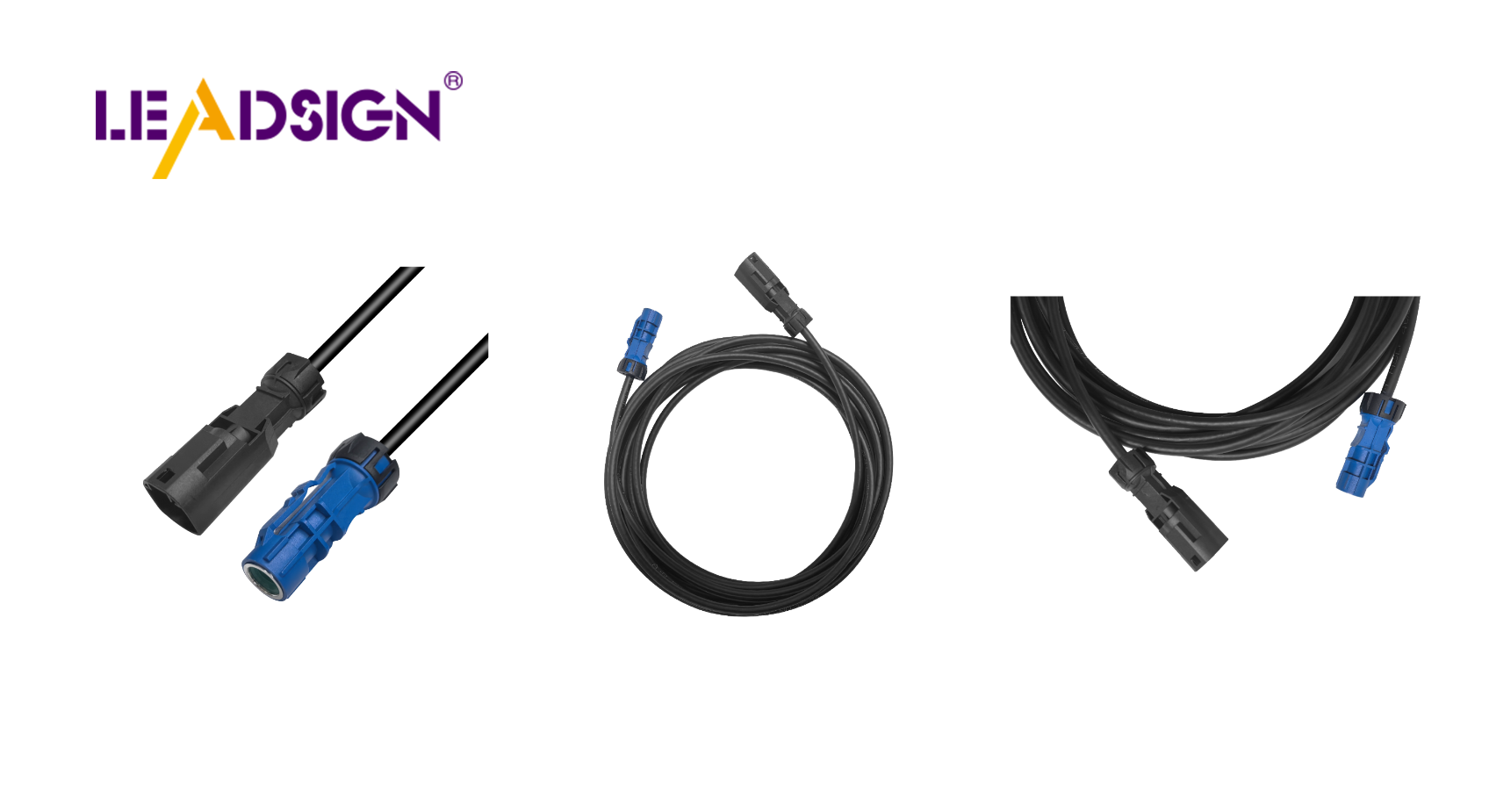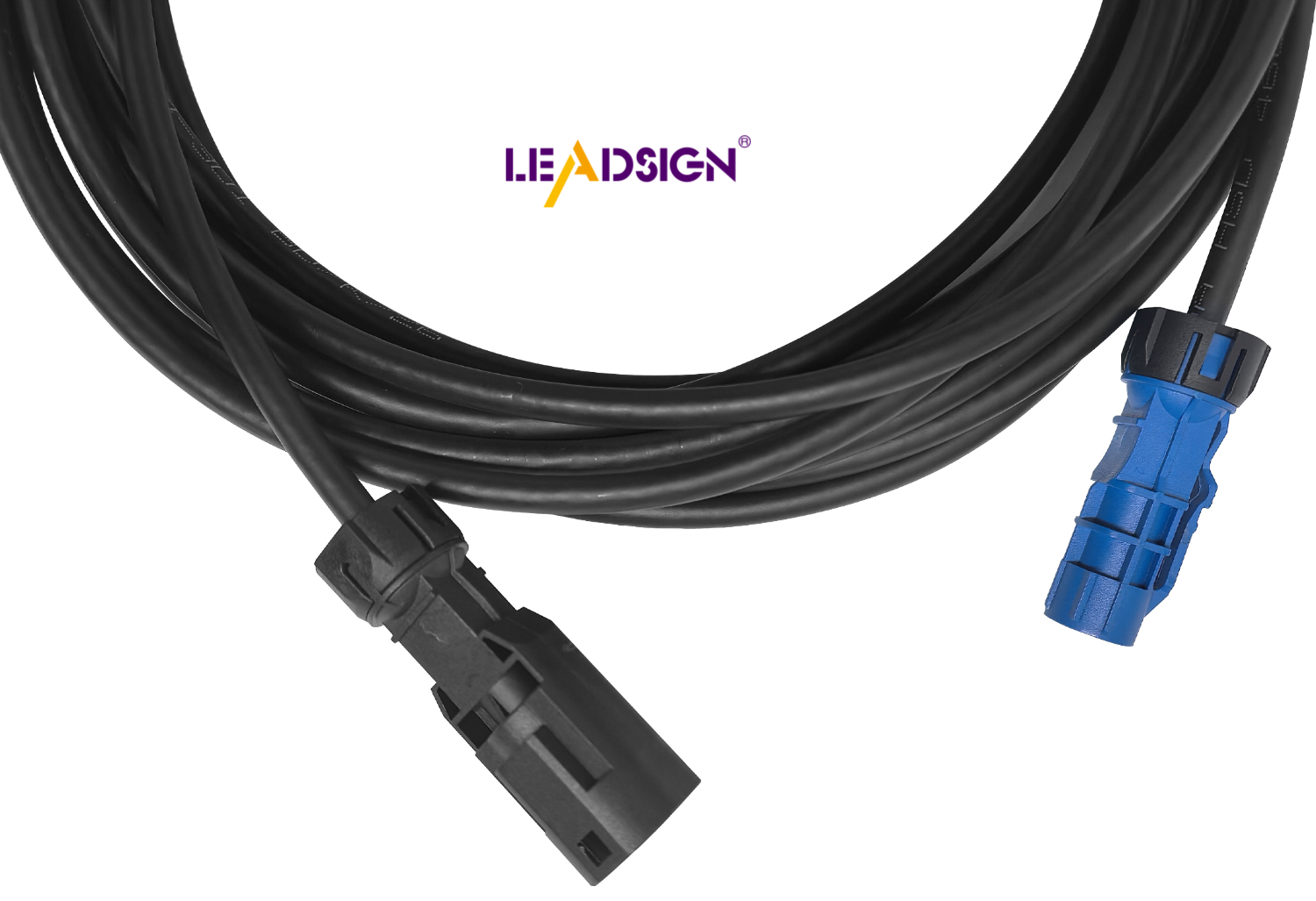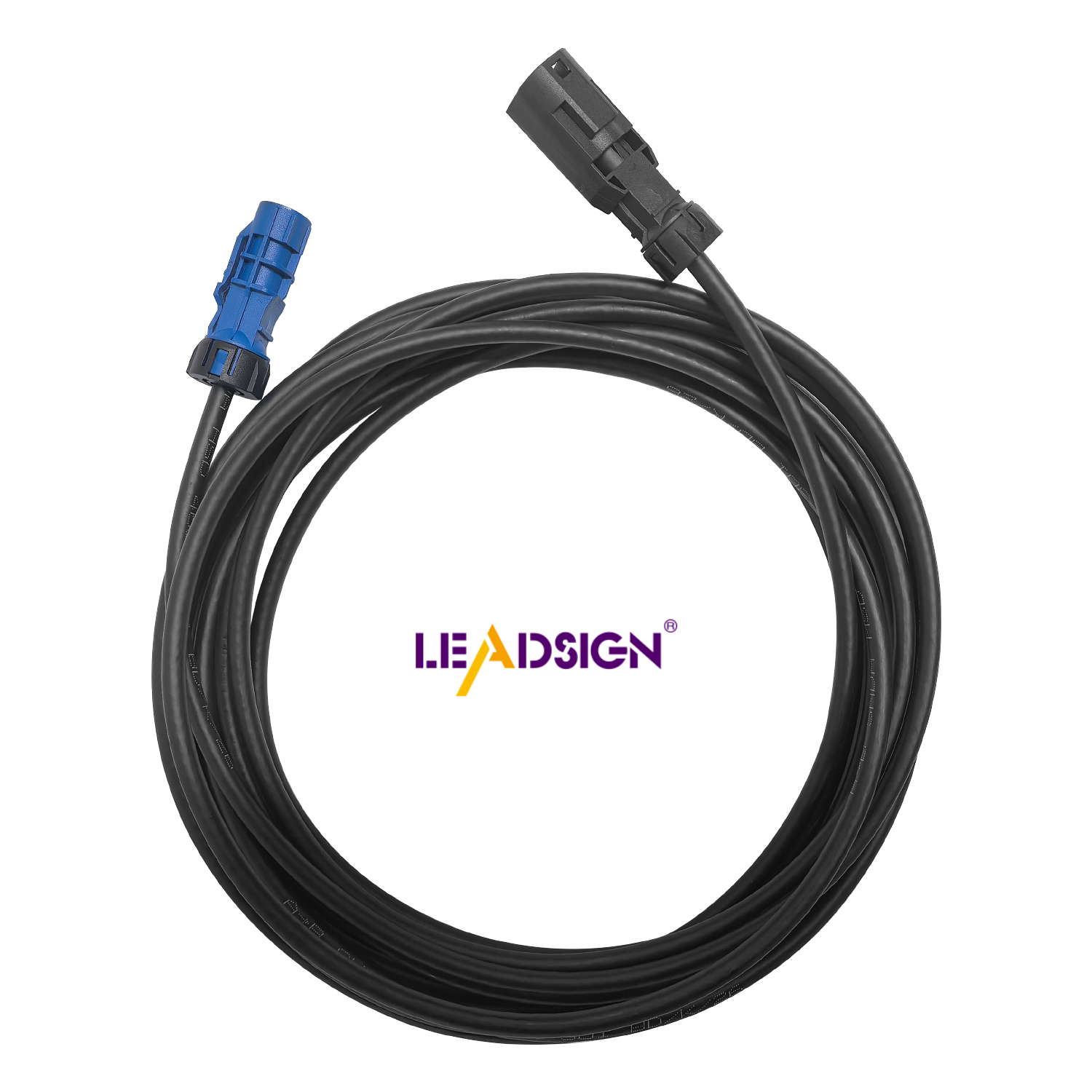Choosing the Right Automotive Harness Connectors for Your Needs

Auto harness connectors are crucial for your car's safety and functionality. Selecting the wrong auto harness connectors can lead to significant electrical issues. These problems may include poor connections, short circuits, or even damage to the system. Old or rusty connectors can disrupt the wiring, making your car less reliable. Opting for the right auto harness connectors ensures your car operates efficiently and has a longer lifespan.
Key Takeaways
Picking the right car harness connectors is very important. Bad choices might cause electrical problems or system breakdowns.
Know the difference between sealed and unsealed connectors. Sealed ones block water and dirt, so they work well in tough conditions.
Check the material of the connectors. Tough materials like PTFE and copper make them last longer and work better.
What Are Auto Harness Connectors?
Definition and Purpose
Auto harness connectors are key parts of a car's electrical system. They join wires and parts, letting power and data move through the car. Over time, these connectors have improved to match modern cars' needs for better performance and strength.
Here’s a simple look at what they are and do:
Definition | Main Uses |
|---|---|
1. Inside connections: Link parts like radios and sensors. |
Knowing their purpose shows how these connectors keep your car's electrical system working well.
Role in Automotive Electrical Systems
Auto harness connectors are the heart of your car's electrical setup. They link all the electric parts, making sure power and data flow smoothly. Without them, systems like brakes, steering, and music players wouldn’t work.
Here’s what they do in your car:
Send power and data to different parts.
Use male and female ends to make strong connections.
Control energy for main systems (like the engine) and extra systems (like lights).
Different connectors are made for specific jobs in cars. Some send data quickly, while others focus on power. Their design helps your car run well in all situations.
Types of Automotive Harness Connectors

Sealed vs. Unsealed Connectors
It’s important to know sealed and unsealed connectors differ. Each type is made for specific uses in vehicles.
Feature | Sealed Connectors | Unsealed Connectors |
|---|---|---|
Sealing Performance | Blocks water, dust, and rust effectively | No sealing, less protection from outside elements |
Protection Level | Waterproof, great for tough conditions (IP67/IP68) | Less protection, not good for wet or rough areas |
Special Designs | Includes O-rings and locks, costs more | Simple design, cheaper to make |
Dust Resistance | Keeps out dust and dirt well | Open design, less dust protection |
Applications | Used in cars, boats, planes, and factories | Used in home devices, computers, and simple car parts |
Sealed connectors are best for tough places. Unsealed ones work in safer areas. Pick based on your car’s needs.
Multi-Pin vs. Single-Pin Connectors
The number of pins changes how a connector works. Multi-pin connectors join many wires in one spot. They are great for complex systems like engines or screens. Single-pin connectors handle simple jobs. They are used for lights or sensors.
Multi-pin connectors save space and keep wires neat. Single-pin ones are easier to use and replace. Think about your car’s needs before picking one.
Specialized Wire Connectors for Specific Applications
Some connectors are made for special car tasks. These connectors work well for unique jobs. Examples include:
Screw terminal connectors for batteries and grounding.
Pin connectors for sensors, lights, and engines.
Barrel connectors for GPS and audio signals.
Other advanced connectors include Weather Pack, AMP Superseal, and FAKRA systems. These are strong and meet modern car needs.
Knowing these connector types helps you choose the right ones for your car’s electrical system.
Key Features to Think About in Auto Harness Connectors
Strength and Material Quality
When picking wire connectors, strength is very important. The material of a connector affects how strong and useful it is. For example, PTFE/Teflon handles heat, water, and chemicals well. This makes it great for tough jobs. Nylon costs less and works for easier tasks. Below is a table showing materials and their features:
Material | Features | How It Affects Use |
|---|---|---|
PTFE/Teflon | Handles heat, water, oil, and chemicals | Best for tough jobs like in airplanes |
Nylon | Works well, absorbs water, cheaper | Good for simple tasks |
Polyurethane | Bends easily, resists sunlight, not for extreme heat | Better for covering wires than for tough uses |
Copper | Conducts electricity well, bends easily, strong | Best for carrying power, depends on purity |
Aluminum | Light, cheap, less power flow, breaks easier | Good for light jobs, but not very strong |
Using good materials makes connectors last longer and work better.
Matching Your Vehicle's System
Your connectors need to fit your car’s system. Different systems need certain connectors to work right. For example, multi-pin connectors are good for complex systems like screens. Single-pin connectors are better for simple things like lights. Always check your car’s needs to avoid wrong matches.
Easy to Install
Putting in connectors should be simple. Look for ones with crimp ends or locks. These features make installation easier and prevent mistakes. Easy connectors save time and ensure they stay in place.
Protection from the Environment
Connectors must handle tough conditions. Heat, water, and dirt can harm them over time. Choose connectors with high IP ratings like IP67 or IP69K. These ratings mean they resist water and dust well. Anti-vibration parts and strong seals also help keep them working. For example, Aptiv connectors use special seals and springs to stay strong in hot or cold weather.
By focusing on these points, you can pick connectors that work well and last long.
Popular Automotive Wire Connectors in 2025

Overview of Top-Rated Connectors (e.g., Z27C2, Y11A1, L64A2, L42B2)
In 2025, car wire connectors have greatly improved. Some models are known for being strong and dependable. Here are a few popular ones:
Molex: These connectors are tough and work well in harsh places. They keep connections safe and steady.
TE Connectivity: Built for rough conditions, they are great for trucks and heavy vehicles.
Delphi: These sealed connectors block water and dirt, ensuring secure connections.
These connectors show the latest trends, focusing on strength, efficiency, and fitting modern car systems.
Pros and Cons of Leading Connectors
Knowing the good and bad sides of connectors helps you choose wisely. Here’s a simple comparison:
Factor | Pros | Cons |
|---|---|---|
Keeps systems safe within limits. | Overloading can cause damage or fire. | |
Voltage rating | Stops electrical problems and protects parts. | Wrong voltage can harm systems or cause safety risks. |
Number of contacts | More contacts mean better signals and future upgrades. | Can be harder to install or match with systems. |
Environmental Conditions | Handles tough weather, making them last longer. | Bad choice may fail in extreme conditions. |
By comparing these points, you can pick connectors that suit your car and keep it safe.
Use Cases for Popular Models (e.g., Molex, HSD Connector)
Different connectors work best for certain car parts. For example:
Molex connectors are great for lights and entertainment systems.
TE Connectivity connectors are perfect for trucks and off-road vehicles in tough conditions.
Delphi connectors work well in engines, resisting heat and staying sealed.
HSD Connector: This fast data connector is key for modern cars. It supports USB, Ethernet, and LVDS, making it great for screens and driver-assist systems. Its strong crimp design keeps it secure and long-lasting.
These examples show how the right connector improves performance and keeps your car reliable for years.
How to Pick the Best Automotive Harness Connector
Knowing Your Vehicle’s Electrical Needs
Understanding your car's electrical needs is very important. Follow these steps to pick the right connectors:
Check if the connector can handle the highest current.
Look at how heat affects the connector in hot places.
Test small-signal circuits for good contact resistance. Use special coatings if needed.
Make sure the insulation is strong and resists electricity well.
Think about the environment, like heat, water, or humidity.
Pick materials for the cover and ends based on these needs.
By doing this, you’ll find connectors that work well for your car.
Thinking About Environmental Factors
The environment affects how well connectors work. Hot or cold weather can change their shape and cause problems. Water can make them rust, so sealed connectors are better in wet areas. Dustproof and waterproof designs with high IP ratings keep out dirt and water. Electric cars need connectors that resist chemicals like car fluids. Always choose connectors that match where they will be used.
Balancing Cost and Quality
Good connectors don’t have to cost too much. Strong materials like copper or PTFE last longer and work better. These may cost more but prevent future problems. For simple jobs, cheaper materials like nylon can work fine. Spend more on important systems, especially in electric cars.
Following Manufacturer Advice
Manufacturers give helpful tips for choosing connectors. They explain current limits, voltage, and how strong the materials are. For example, sealed connectors are great for wet places. Heat-resistant ones are best for engines. Following these tips helps you pick connectors that fit your car and stay updated with new trends.
Picking the right car harness connectors keeps your car safe. Focus on strong materials, system fit, and protection from water and dirt. Learning about choices makes your car safer and more reliable. Choose connectors that match your car’s needs for lasting results.
FAQ
What makes sealed and unsealed connectors different?
Sealed connectors keep out water and dirt. They are great for tough places. Unsealed connectors don’t have this protection. They work better in dry, safe areas.
How can I tell if a connector fits my car?
Look at your car’s electrical needs. Match the connector’s voltage, current, and pins. This ensures it works well with your car.
Why do modern cars need fast data connectors?
Fast data connectors, like HSD ones, send data quickly. They help systems like cameras, screens, and driver-assist tools work smoothly.
See Also
Why HSD Connectors Are Crucial for Automotive Success
Benefits of HFM Connectors for Automotive Performance
Enhancing Automotive Efficiency Through HFM Connectors

